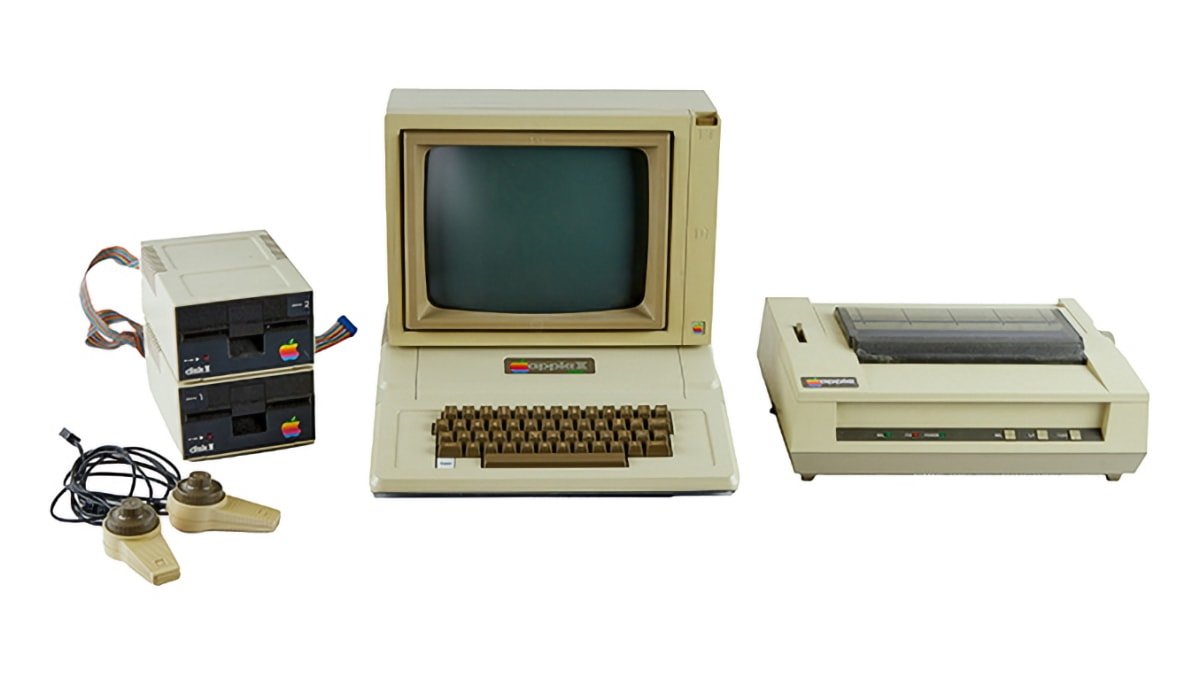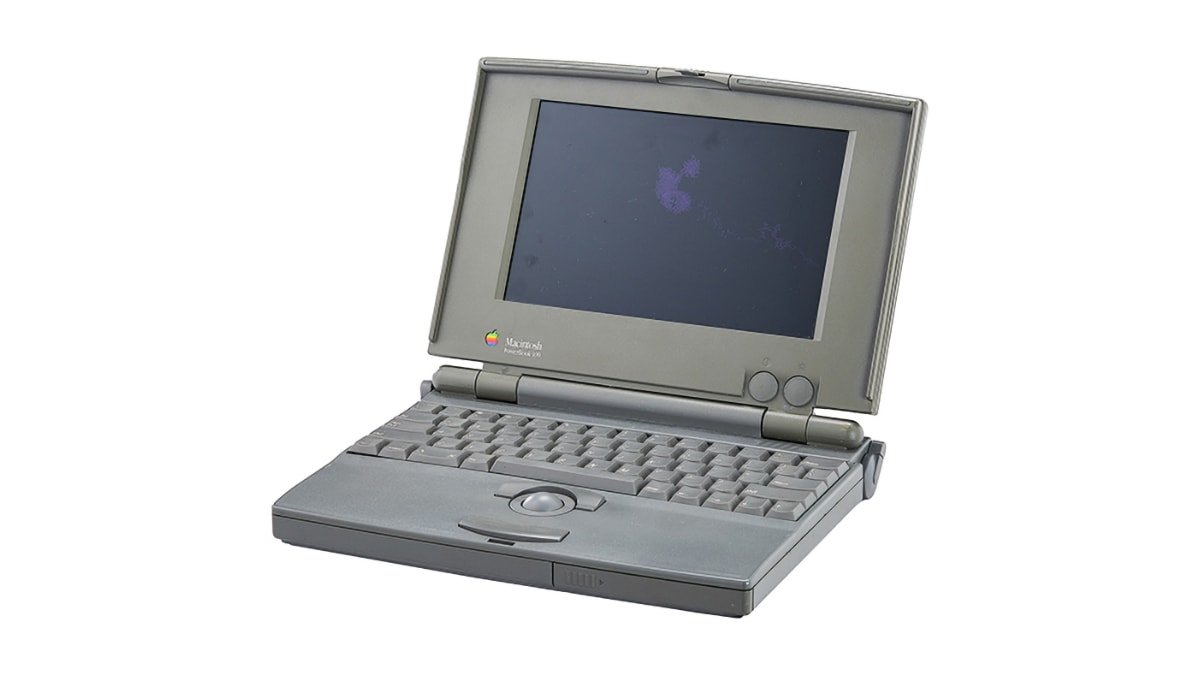Massive auction has nearly every vintage Apple product up for sale
A new auction in March will feature a collection of over 500 Mac computers and other Apple products spanning over 45 years.

Apple II Plus computer
Hosted by Julien's Auctions, "The Hanspeter Luzi Vintage Apple Archive" features an extensive collection of Apple products that will be offered for the first time at an auction. The Luzi family is providing the public with a range of products from 1977 to 2008.
One of the highlights of the collection includes an Apple II Plus computer. The second model in the Apple II series, produced from 1979 to 1982, made the computers accessible to a broader audience since the Apple I series was focused more on hobbyists.
-xl.jpg)
1984 Macintosh (128K)
The Apple II Plus computer system includes a monitor, two disk drives, a printer, a pair of game paddles, various connecting cables and parts, and a Monitor II User's Manual. It has an estimated value between $300 to $500.
Another product in the auction is an original Macintosh computer that was later rebranded as the Macintosh 128K. Steve Jobs introduced it at Apple's annual shareholder's meeting on January 24, 1984, with an estimated value between $200 to $300.
Next, the auction includes a Macintosh Portable computer demonstration unit. Launched in 1989 at the Universal Amphitheater in Universal City, California, it was among the first consumer laptops to have an active matrix LCD screen, praised for being fast and sharp.
However, Apple discontinued the model in 1991 due to the computer's heavy batteries and high cost of $6,500, leading to few sales. It has an estimated value between $300 to $500.
Another historical computer in the auction is a 1991 PowerBook 100. In 1990, Apple CEO John Sculley directed the creation of several low-cost computers, including the PowerBook laptop line, aimed at a high degree of public popularity.

A 1991 PowerBook 100
The PowerBook 100 was Apple's second generation of laptops with the lowest price. Its design was sleeker than the Macintosh Portable and was significantly lighter.
Apple launched the model in 1991 with the PowerBook 140 and PowerBook 170. They were an immediate success and hit $1 billion in sales within a year, and the PowerBook line was crucial in helping Apple reach its then-highest end-of-year revenue of around $7 billion.
These computer models, along with more Apple products, will be offered in the auction on Thursday, March 30, at Julien's Auctions Gallery in Beverly Hills and online.
Separately, RR Auction is hosting an auction that ends on March 16. It includes rare items such as a working Apple-1 computer that has been autographed by Steve Wozniak and an Apple II board signed by Steve Jobs.
Read on AppleInsider

Apple II Plus computer
Hosted by Julien's Auctions, "The Hanspeter Luzi Vintage Apple Archive" features an extensive collection of Apple products that will be offered for the first time at an auction. The Luzi family is providing the public with a range of products from 1977 to 2008.
One of the highlights of the collection includes an Apple II Plus computer. The second model in the Apple II series, produced from 1979 to 1982, made the computers accessible to a broader audience since the Apple I series was focused more on hobbyists.
-xl.jpg)
1984 Macintosh (128K)
The Apple II Plus computer system includes a monitor, two disk drives, a printer, a pair of game paddles, various connecting cables and parts, and a Monitor II User's Manual. It has an estimated value between $300 to $500.
Another product in the auction is an original Macintosh computer that was later rebranded as the Macintosh 128K. Steve Jobs introduced it at Apple's annual shareholder's meeting on January 24, 1984, with an estimated value between $200 to $300.
Next, the auction includes a Macintosh Portable computer demonstration unit. Launched in 1989 at the Universal Amphitheater in Universal City, California, it was among the first consumer laptops to have an active matrix LCD screen, praised for being fast and sharp.
However, Apple discontinued the model in 1991 due to the computer's heavy batteries and high cost of $6,500, leading to few sales. It has an estimated value between $300 to $500.
Another historical computer in the auction is a 1991 PowerBook 100. In 1990, Apple CEO John Sculley directed the creation of several low-cost computers, including the PowerBook laptop line, aimed at a high degree of public popularity.

A 1991 PowerBook 100
The PowerBook 100 was Apple's second generation of laptops with the lowest price. Its design was sleeker than the Macintosh Portable and was significantly lighter.
Apple launched the model in 1991 with the PowerBook 140 and PowerBook 170. They were an immediate success and hit $1 billion in sales within a year, and the PowerBook line was crucial in helping Apple reach its then-highest end-of-year revenue of around $7 billion.
These computer models, along with more Apple products, will be offered in the auction on Thursday, March 30, at Julien's Auctions Gallery in Beverly Hills and online.
Separately, RR Auction is hosting an auction that ends on March 16. It includes rare items such as a working Apple-1 computer that has been autographed by Steve Wozniak and an Apple II board signed by Steve Jobs.
Read on AppleInsider

Comments
The Bell & Howell Apple II Plus is interesting. I didn't know it existed.
For what’s worth, I have a working Macintosh 512K — the floppy drive (and external drive) work but I don’t stress them, instead I use a Floppy Emu with it, so I can transfer files via SD card, no problem. Floppy Emu also works with Lisa and Apple II machines:
https://www.bigmessowires.com/floppy-emu/
Regardless, it does matter to collectors and hobbyists. That’s just a fact. For various reasons—for me, I guess it’s about preserving knowledge and history, and reviving shared experiences, which can be educational and, for those who were around at the time, nostalgic. Is it so hard to see value in the physical experience of using an early Mac? Sure, you can use an emulator for the software, but it’s not the same.
www.huffpost.com/entry/kremlin-typewriters_n_3579184
Might some also have desirable software from the early days, although there may be more economical ways to accomplish that...
Probably not worth much.
It took until the 3G iPhone for me to return to Apple after they killed off the Apple II line for the Mac. Left a huge user base out to dry.